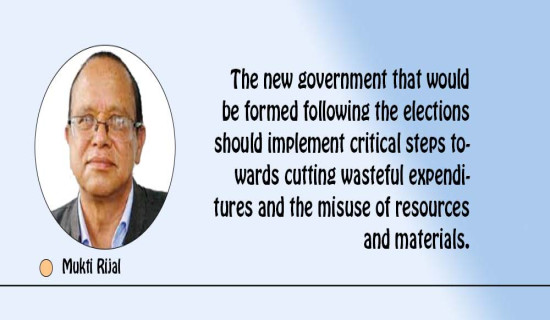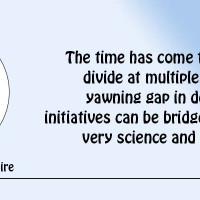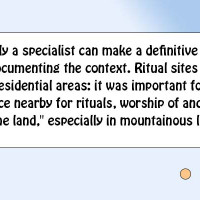- Thursday, 22 January 2026
Good Governance For Road Safety
In the past two months, a series of road accidents in Nepal have claimed the lives of many people, predominantly Nepalis but also foreign nationals, mainly from India. Just last week, such incidents occurred almost daily. This raises the question: what are the causes of these accidents? While heavy rains causing floods and landslides are seen as a primary cause, it is also important to examine the conditions of the roads, the state of the vehicles, and the skills and capabilities of the drivers together with the governance system in Nepal.
On August 23, 2024, both Nepal and India mourned the deaths of 27 Indian citizens who were on a 10-day pilgrimage to Nepal from Maharashtra. A total of 110 people from various parts of Maharashtra came to Nepal in two buses and one traveller van. One of the buses met with an accident, resulting in the deaths of 25 passengers, one driver, and one cleaner, while 16 other passengers were injured. The survivors received initial treatment in Nepal until the Indian government from the Maharajgunj district in Uttar Pradesh arranged to take them and the bodies of two deceased back to India. The bodies of the 25 deceased were airlifted back to Maharashtra after post-mortem examinations were completed in Nepal. This tragic accident occurred when the bus fell into the fast-flowing Marsyangdi River at Abukhaireni of Tanahu district while heading from Pokhara to Kathmandu.
Tragic accident
Although it is monsoon season now, Nepal has long struggled with road safety issues throughout the year. The rugged terrain, with its mountains, gorges, and fast-flowing rivers, makes transportation challenging. The roads that are constructed are often poorly maintained and narrow. While road construction has increased over the years, many remote areas remain unreachable. In addition to the tragic accident that claimed the lives of 27 people from Maharashtra, a landslide last month sent two buses into the fast-flowing Trishuli River, killing more than 60 people. According to official data, between April 2022 and April 2023, there were over 2,300 traffic fatalities in Nepal.
Additionally, in recent months, there have been several plane and helicopter crashes in Nepal. This longstanding problem with aviation not only endangers the lives of Nepalis and visitors but also damages the tourism industry, which is a vital source of revenue. According to the World Bank report, 'Delivering Road Safety: Leadership Priorities and Initiatives to 2030', road crash deaths and injuries in Nepal have been sharply increasing since the early 2000s. In the fiscal year 2017/18, a total of 2,541 road deaths were officially recorded in Nepal, equivalent to a fatality rate of 8.59 per 100,000 population. During the same period, there were 4,144 serious injuries and numerous minor injuries officially recorded.
The World Health Organisation (WHO) estimated that in 2016, the fatality rate was 15.9 per 100,000 population, nearly double the official estimates. The report also states that 40 per cent of the people killed on Nepal’s roads in 2017/18 were under 26 years old. In 2016, transport injuries were the second leading cause of death among men aged 15-49 years. A recent World Bank Group (WBG) study on road safety in South Asia highlighted a crisis exacerbated by rapid growth in vehicle ownership and the diversity of motorised and non-motorised traffic of various sizes and speeds, without adequate protection for the most vulnerable.
As vehicle ownership in Nepal increases, the likelihood of road crashes will continue to rise. To prevent this, it is urgently necessary to implement effective measures. Nepal has a National Road Safety Strategy and Road Safety Action Plan based on the five pillars of the United Nations Global Plan for the Decade of Action for Road Safety 2011/2020. These pillars include road safety management, safer roads and mobility, safer vehicles, safer road users, and post-crash response. However, the World Bank report states that only limited progress has been made in addressing these pillars, resulting in serious road safety challenges for Nepal.
The data from the World Bank report and the frequent road accidents in Nepal indicate that improving road safety is crucial for national health, well-being, and economic growth. Significantly reducing the number of crash fatalities and injuries over time would enable countries like Nepal to achieve substantial economic growth and increased national income, along with welfare gains for a large portion of the population.
Cartel system
Unfortunately, the lack of good governance has hindered the implementation of the road safety programmes that have been committed to. The cartel system and syndicates prevent capable agencies from building and maintaining road systems. Frequent changes in government lead to instability and misallocation of public funds, impeding the efficient running of the country. Furthermore, the protection of incompetent contractors by political parties and leadership, combined with corruption related to commissions in the construction sector, results in poor construction and maintenance, leading to more fatalities.
To save lives and lead Nepal toward greater prosperity, it is crucial to take road safety issues more seriously and implement the commitments made. Numerous accidents occur even within the Kathmandu Valley, which is supposed to have roads everywhere. However, the structure of these roads, especially around sharp bends, raises concerns as accidents become more frequent. Similarly, there are a series of accidents along the highways, but people have no choice but to take the next bus or truck to reach their destination. Life is difficult, and to meet their livelihood needs, people, particularly the most vulnerable, take risks daily. The World Bank report also indicates that youth are more vulnerable to deaths and injuries in road accidents, which puts our future at risk.
(Sharma is a senior journalist and women's rights advocate. namrata1964@yahoo.com. Twitter handle: @NamrataSharmaP)
















